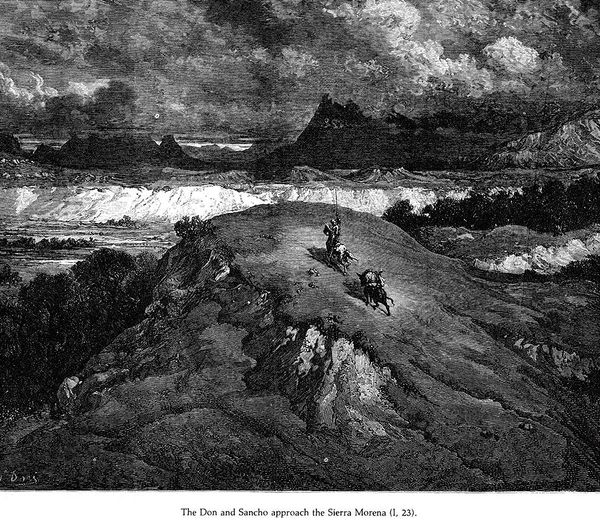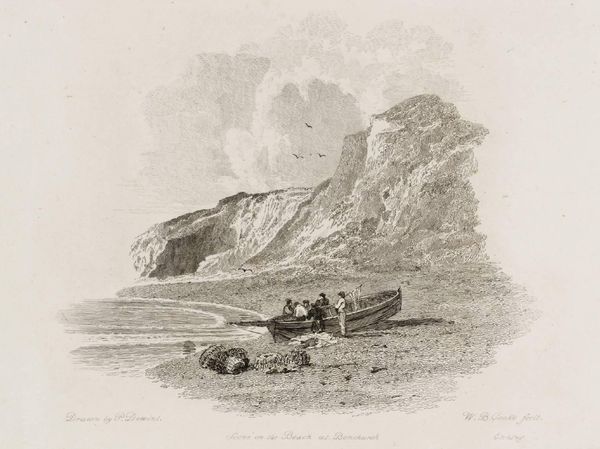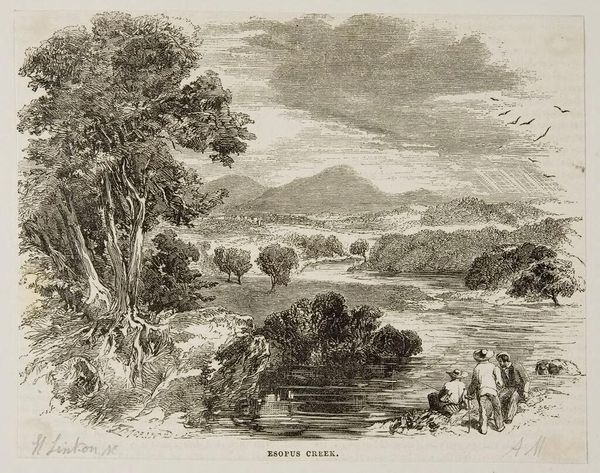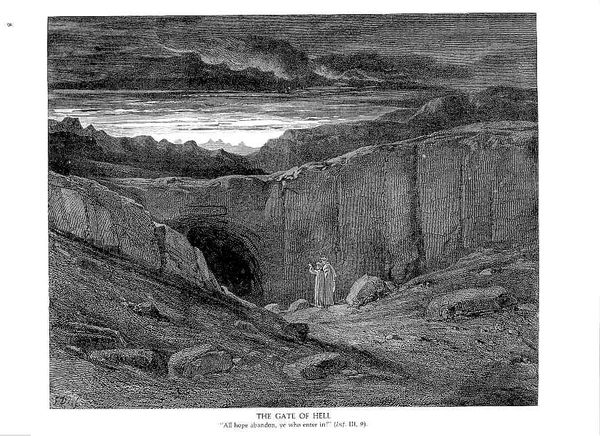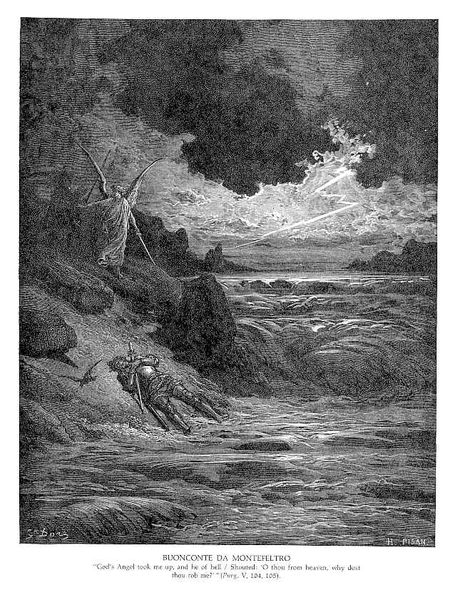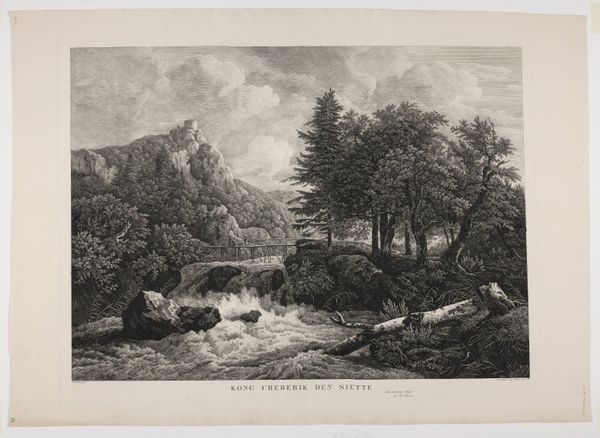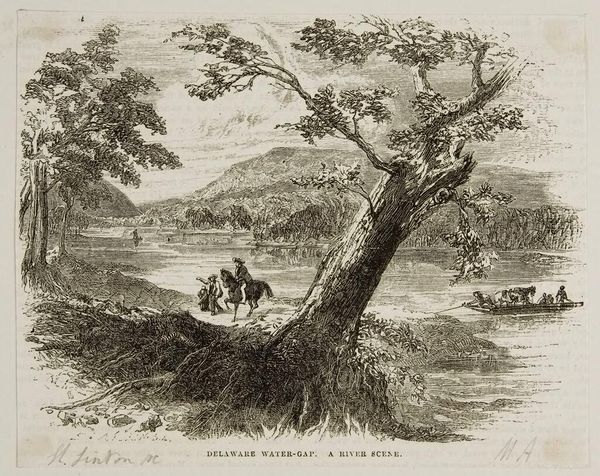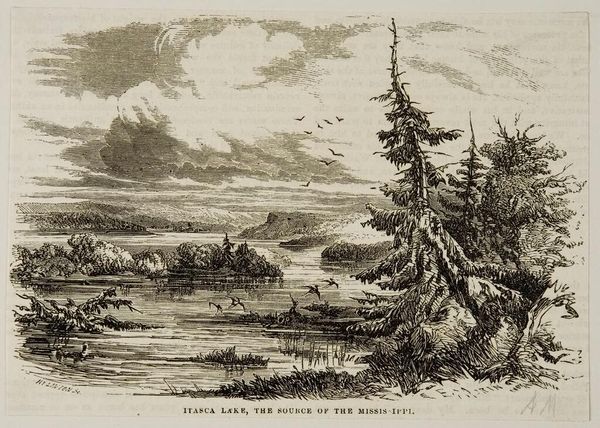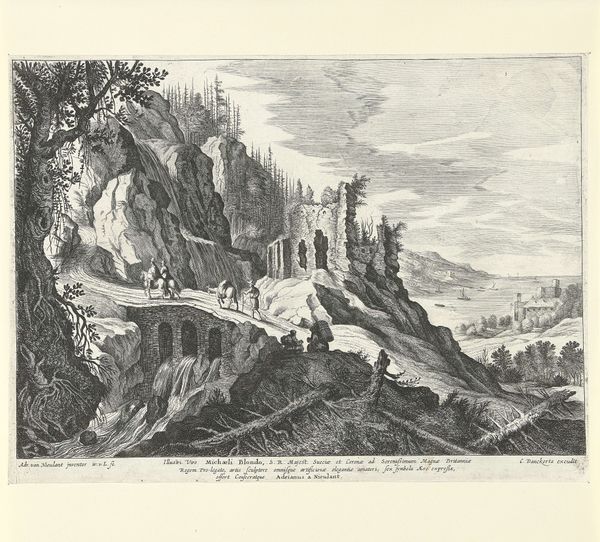
print, photography, engraving
# print
#
old engraving style
#
landscape
#
photography
#
romanticism
#
engraving
Copyright: Public domain
Editor: So, this is "Vydubychi Monastery in Kyiv," an 1844 engraving by Taras Shevchenko. The detail achieved with just the etched lines is remarkable, and the contrast gives the whole scene a dramatic, almost dreamlike quality. What can you tell me about it? Curator: I’m immediately drawn to the process of creating this print. Think about the labour involved in carefully etching that image onto a metal plate. It's not just a representation of a monastery; it's a product of very specific socio-economic circumstances, of access to materials, tools, and a printmaking tradition. Notice the depiction of labor happening within the image too - with the shepherd and grazing animals. What sort of market and intended consumption was the piece designed to fulfil, what are the material constraints? Editor: That's interesting; I hadn't considered that. It’s easy to overlook the material realities behind it all. Was printmaking like this widespread at the time? Curator: It was becoming more accessible but remained a skilled craft. So, how does the act of making this artwork comment on the hierarchy between labour of making this versus the depiction of a holy site? Editor: That's a fantastic point. It highlights how art can be both a product of its time and a commentary on it, both socially, spiritually and economically. Curator: Exactly, looking at the materials and means of production gives us access to thinking more critically about art’s place within culture at large. We often divorce those facets and it only enhances art’s potential interpretations.
Comments
No comments
Be the first to comment and join the conversation on the ultimate creative platform.
